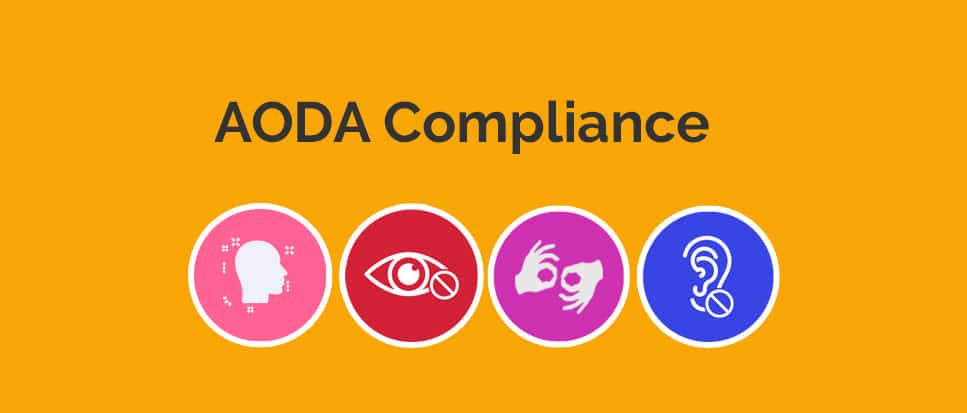Have you had a website created in the last couple of years and ensured that it was AODA compliant – that is that it complies with the Accessibility for Ontarians with Disabilities Act? If you are an organization with more than 50 employees then you are required to ensure that your website complies with the act.
Did you know that any time you make a content update to the website – that is add text, a picture, a video, etc. – there are things you should be doing to maintain your AODA compliance?
Lately we’ve been circling back with clients whose sites were launched in the last year or two to check their sites, and every single one failed the compliance tests.
To date the fixes have been small, requiring just a couple of hours to bring the sites back into compliance. Some of the common things we’ve encountered are:
- broken links
- images missing descriptive tags
- not enough contrast between background colours and foreground text
- and a variety of other issues
If you’d like us to check your site, please contact us.
https://seethroughweb.com/wp-content/uploads/AODA-Consultation.png
Looking for an automated solution to check and maintain your site’s
AODA compliance?
Check out Accessibe,
its what we use.
Is your website AODA compliant?
Even though our cities have come a long way when it comes to making it easier for all to navigate the physical world, changes to the cyber world have been slower. In the province of Ontario, the world wide web is about to become a bit more reachable though changes in the Accessibility for Ontarians with Disabilities Act (“AODA”) which requires websites to provide viable alternatives for people with disabilities to engage with their content. Needless to say, these changes bring about particular challenges to web development. Here are the facts to keep in mind.
Who is bound by AODA?
If you are a private or a non-profit organization with more than 50 employees or if you are a public sector organization, you are certainly bound to comply with the AODA.
When should I do this?
For government entities, the new AODA requirements came into effect in 2012. For private companies with 50 employees or more, they came into effect in January, 2014. All large organization websites in the Province of Ontario must fully comply by January 1, 2021. This means that if your organization gives its website a “significant refresh” after January 1, 2014, this refresh must be compliant with AODA. Content on your website which is added on or after January 1, 2012 must also comply. Every large organization’s website in Ontario has to be compliant by January 1, 2021.
What does it really mean?
Making your website accessible means that you make available text alternatives for any non-text content. This will make it easier for your users to convert it into other accessible formats such as Braille. It also means adopting high contrast visuals that make it possible for persons with sight limitations to use your website.
What can I do?
With something as important and as technical as meeting the AODA requirements, the best approach is to have your website evaluated by a specialized team who can look at it from every possible angle, not only from a design but also from a programming perspective. You might have to evaluate not only the content but the web design strategies you had previously implemented and assess whether they will continue to meet the needs of your users. Your web developer can help you address technical details that you might not even be aware of and will also keep a record of all the accessibility issues that have been addressed.
No matter how daunting this task may seem, remember that we are only a click or a call away. You will be surprised at how, with the right help, your website will be fully AODA compliant in no time. Not only will you fulfill government requirements but the benefits to your business will be remarkable. Above all, you will be glad to know that you have done your part to make a world full of information and connections much more accessible to all of your users.
Click here to contact SeeThrough Web to make sure that your website is AODA compliant.

